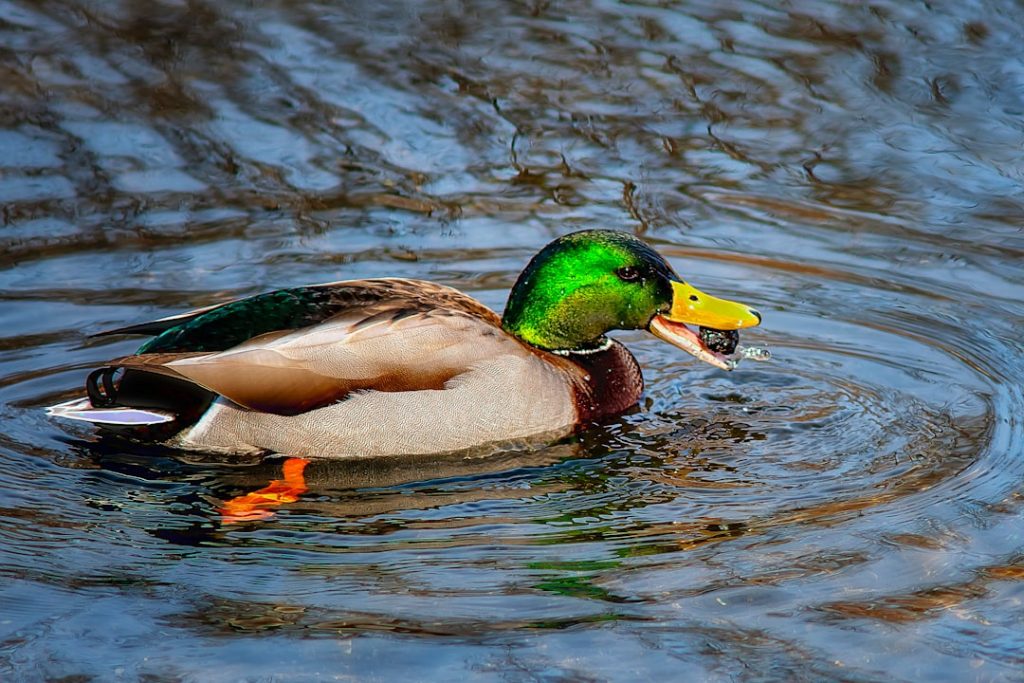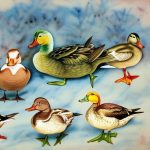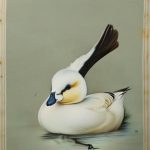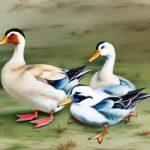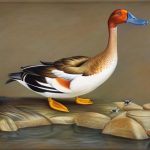Non-breeding ducks, also known as non-breeding waterfowl, are a vital part of the world’s ecosystems. These ducks are a diverse group of species that do not breed during certain times of the year, often due to environmental factors such as food availability, weather conditions, or molting. Non-breeding ducks can be found in a variety of habitats, including wetlands, lakes, rivers, and coastal areas. They play a crucial role in maintaining the balance of these ecosystems by contributing to nutrient cycling, controlling insect populations, and providing food for predators. Understanding the characteristics, behavior, and conservation needs of non-breeding ducks is essential for protecting these important species and the habitats they rely on.
Table of Contents
Key Takeaways
- Non-breeding ducks play a crucial role in ecosystems, even though they do not breed during certain times of the year.
- Non-breeding ducks exhibit different characteristics compared to breeding ducks, such as changes in plumage and behavior.
- Understanding the behavior and migration patterns of non-breeding ducks is essential for their conservation and protection.
- Conservation efforts for non-breeding ducks are important to maintain healthy ecosystems and biodiversity.
- Threats and challenges facing non-breeding ducks include habitat loss, pollution, and hunting, making it crucial to support and conserve their populations.
Characteristics of Non-Breeding Ducks
Non-breeding ducks come in a wide range of sizes, shapes, and colors, with species such as the mallard, northern pintail, and American wigeon being common examples. During the non-breeding season, these ducks may exhibit different plumage than they do during the breeding season, often sporting more subdued colors and patterns. Non-breeding ducks are also known for their diverse feeding habits, with some species primarily feeding on aquatic plants and invertebrates, while others may also consume small fish and crustaceans. Additionally, non-breeding ducks are highly adapted for life on the water, with webbed feet for swimming and diving and waterproof feathers that keep them dry and buoyant. These characteristics make non-breeding ducks well-suited for their aquatic habitats and enable them to thrive in a variety of environments.
Behavior and Migration Patterns
Non-breeding ducks exhibit a range of behaviors and migration patterns that are influenced by factors such as food availability, weather conditions, and breeding cycles. During the non-breeding season, many duck species form large flocks and congregate in areas with abundant food resources, such as wetlands and coastal estuaries. These flocks provide safety in numbers and allow ducks to forage more efficiently. Some non-breeding ducks may also undertake long-distance migrations to escape harsh winter conditions and find suitable habitats with ample food and open water. For example, many species of non-breeding ducks migrate from their breeding grounds in the northern hemisphere to warmer regions in the south, where they can find refuge from freezing temperatures and limited food sources. Understanding these behavior patterns and migration routes is crucial for conserving non-breeding duck populations and protecting their habitats along their migratory pathways.
Conservation and Protection of Non-Breeding Ducks
Conserving non-breeding ducks is essential for maintaining healthy ecosystems and preserving biodiversity. Many non-breeding duck species face threats such as habitat loss, pollution, hunting, and climate change, which can have detrimental effects on their populations. To address these challenges, conservation efforts focus on protecting and restoring critical habitats such as wetlands, marshes, and coastal areas that non-breeding ducks rely on for feeding, resting, and molting. Additionally, regulations on hunting and fishing help to ensure that non-breeding duck populations are sustainably managed and not overexploited. Conservation organizations also work to raise awareness about the importance of non-breeding ducks and advocate for policies that support their protection. By implementing these conservation measures, we can help safeguard non-breeding duck populations for future generations.
Importance of Non-Breeding Ducks in Ecosystems
Non-breeding ducks play a crucial role in maintaining the health and balance of aquatic ecosystems. As omnivorous feeders, they contribute to nutrient cycling by consuming a variety of plant matter, invertebrates, and small fish, which helps to regulate nutrient levels in the water and promote overall ecosystem productivity. Additionally, non-breeding ducks serve as important prey for predators such as raptors, foxes, and larger fish, contributing to the intricate food web dynamics of wetland and coastal habitats. Their foraging activities also help to control insect populations, reducing the risk of pest outbreaks that can negatively impact other wildlife and human communities. By fulfilling these ecological roles, non-breeding ducks contribute to the overall resilience and stability of their habitats.
Furthermore, non-breeding ducks are important indicators of environmental health and water quality. Their presence or absence in a particular area can provide valuable insights into the condition of wetlands and other aquatic ecosystems. Monitoring non-breeding duck populations can help scientists and conservationists assess the impacts of human activities such as pollution, habitat destruction, and climate change on these vital habitats. By understanding the ecological significance of non-breeding ducks, we can better appreciate their value in sustaining healthy ecosystems and work towards their conservation.
Threats and Challenges Facing Non-Breeding Ducks
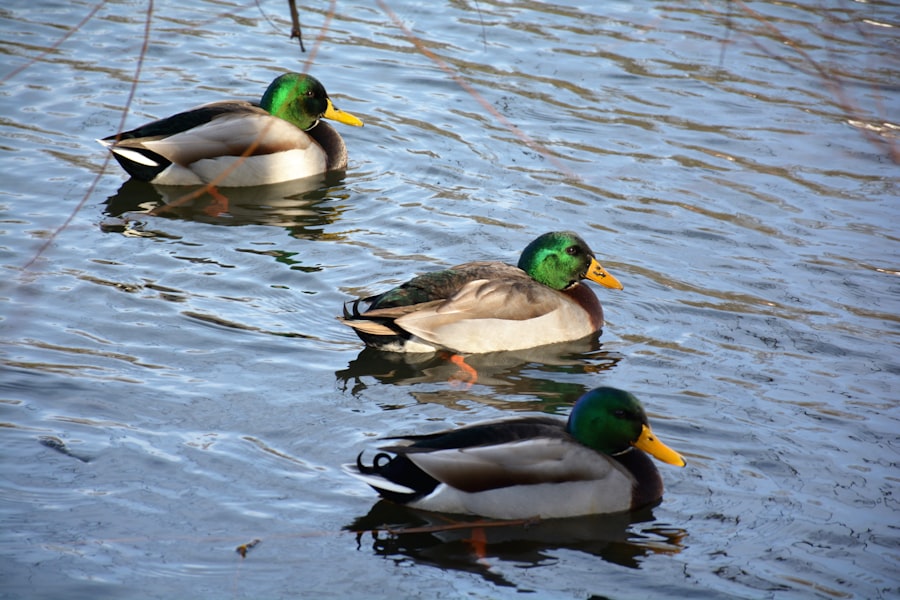
Non-breeding ducks face a variety of threats and challenges that jeopardize their survival and well-being. Habitat loss and degradation due to urban development, agriculture, and industrial activities have significantly reduced the availability of suitable nesting and feeding grounds for non-breeding ducks. Pollution from agricultural runoff, industrial discharge, and urban waste can contaminate waterways and degrade water quality, impacting the health of non-breeding duck populations. Climate change also poses a significant threat to non-breeding ducks by altering weather patterns, sea levels, and habitat availability.
Furthermore, hunting pressure and illegal poaching can have severe impacts on non-breeding duck populations, especially in areas where regulations are not effectively enforced. In some cases, non-breeding ducks may also face competition for food resources from invasive species or suffer from predation by introduced predators. These threats collectively contribute to the decline of non-breeding duck populations worldwide. Addressing these challenges requires coordinated efforts to protect and restore critical habitats, enforce regulations on hunting and fishing, reduce pollution, and mitigate the impacts of climate change.
Ways to Support and Conserve Non-Breeding Duck Populations
There are several ways individuals, communities, and governments can support the conservation of non-breeding duck populations. Protecting and restoring wetlands, marshes, and coastal areas is essential for providing essential habitat for non-breeding ducks to feed, rest, molt, and raise their young. Supporting conservation organizations that work to protect waterfowl habitats through advocacy, research, and on-the-ground conservation efforts can also make a significant impact.
Additionally, promoting sustainable hunting practices through education and outreach can help ensure that non-breeding duck populations are not overexploited. Implementing regulations on hunting seasons, bag limits, and protected areas can help manage hunting pressure on non-breeding duck populations effectively. Furthermore, reducing pollution from agricultural runoff, industrial discharge, and urban waste through improved land management practices and wastewater treatment can help improve water quality for non-breeding ducks.
Addressing climate change through reducing greenhouse gas emissions and implementing adaptation strategies is crucial for mitigating its impacts on non-breeding duck habitats. Supporting policies that prioritize the protection of wetlands and other critical waterfowl habitats at local, national, and international levels is also essential for conserving non-breeding duck populations. By taking these actions collectively, we can help ensure the long-term survival of non-breeding ducks and the health of the ecosystems they depend on.
If you’re considering raising ducks but don’t want to deal with breeding, you might be interested in learning more about non-breeding duck care. Poultry Wizard has a helpful article on how big a coop needs to be for chickens, which can also provide valuable insights for creating a suitable environment for non-breeding ducks. Understanding the space requirements and housing options for poultry can help ensure the well-being of your ducks.
FAQs
What is a non-breeding duck?
A non-breeding duck is a duck that is not actively engaged in the process of reproduction or raising young. This can include ducks that are too young to breed, ducks that are not in breeding condition, or ducks that are not currently nesting or caring for offspring.
How can you identify a non-breeding duck?
Non-breeding ducks may exhibit different plumage, behavior, or vocalizations compared to breeding ducks. They may also lack the physical characteristics associated with breeding, such as brightly colored plumage or specific courtship behaviors.
What do non-breeding ducks do during the breeding season?
During the breeding season, non-breeding ducks may engage in activities such as foraging for food, molting, or socializing with other ducks. They may also migrate to different areas to avoid competition with breeding ducks.
Do non-breeding ducks migrate?
Yes, non-breeding ducks may migrate to different areas during the breeding season to find suitable habitat and resources. Migration allows them to avoid competition with breeding ducks and find areas with abundant food and shelter.
Are non-breeding ducks important to the ecosystem?
Yes, non-breeding ducks play an important role in the ecosystem by contributing to nutrient cycling, controlling insect populations, and serving as prey for predators. They also help maintain the balance of wetland and aquatic ecosystems.
Meet Walter, the feathered-friend fanatic of Florida! Nestled in the sunshine state, Walter struts through life with his feathered companions, clucking his way to happiness. With a coop that’s fancier than a five-star hotel, he’s the Don Juan of the chicken world. When he’s not teaching his hens to do the cha-cha, you’ll find him in a heated debate with his prized rooster, Sir Clucks-a-Lot. Walter’s poultry passion is no yolk; he’s the sunny-side-up guy you never knew you needed in your flock of friends!

